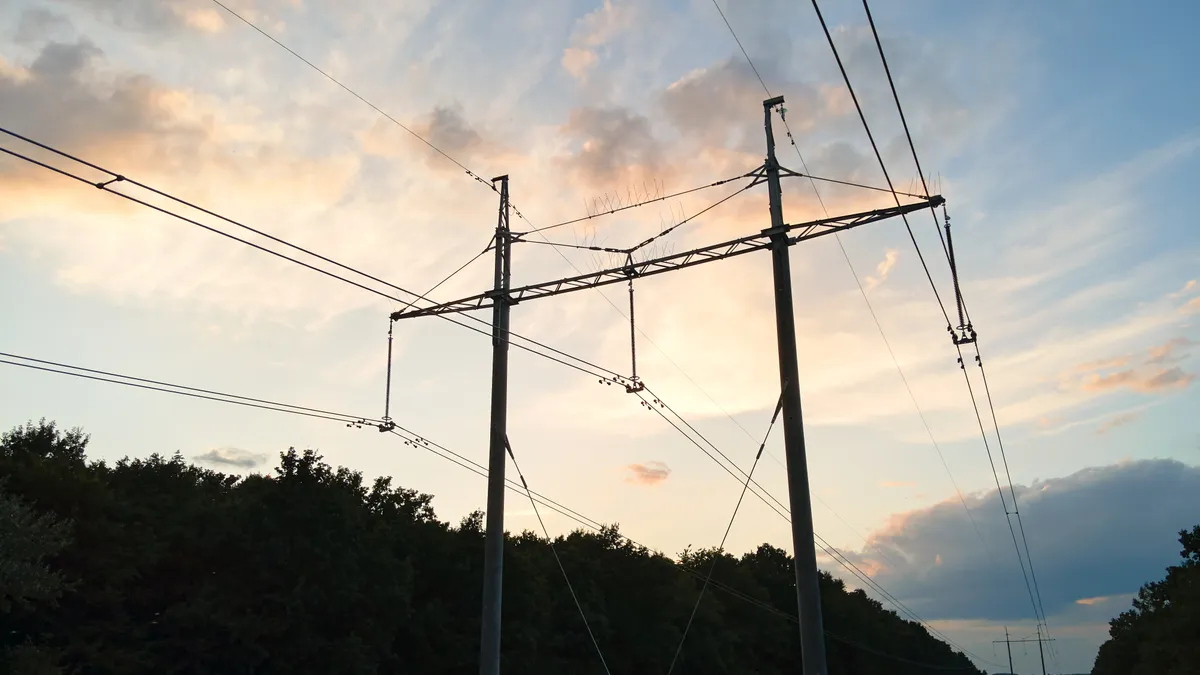Dive Brief:
-
House Democrats on Tuesday introduced a bill to spur transmission development, with a focus on interregional and offshore wind lines.
-
The bill, introduced by Reps. Sean Casten, D-Ill., and Mike Levin, D-Cal., plus 74 co-sponsors, directs the Federal Energy Regulatory Commission to issue rules to improve interregional transmission planning; provides a 30% transmission investment tax credit; incentivizes renewable energy development in priority areas on federal land; and expands consultation with disadvantaged groups and communities in the permitting process.
-
The bill appears to be aimed at “creating the most efficient, lowest cost transmission system that we can to deliver the advanced energy needs customers want and need,” Mike Haugh, a director at Advanced Energy United, said. It may give FERC a “kickstart” on its pending transmission planning and cost allocation rulemaking and a possible interregional transmission proposal, he said, noting the trade group hasn’t taken a position on the legislation.
Dive Insight:
The Clean Electricity and Transmission Acceleration Act joins other transmission and permitting bills introduced in this Congressional session. It comes amid calls for increased transmission development to improve grid reliability and deliver power from renewable energy facilities.
“This is an issue that spans both sides of the aisle, because the electric load is only increasing,” Haugh said. “We need to find a way to get these megawatts to customers and to data centers and to electric vehicle charging stations. There's just a wide variety of things that transmission is the answer for.”
Some of the bill’s provisions would affect FERC. Besides ordering the agency to advance rules for “efficient, cost-effective, and broadly beneficial” interregional transmission, it outlines cost allocation requirements for nationally significant transmission facilities, according to a summary of the bill.
The bill also requires the costs of generator interconnections and network upgrades to be shared broadly based on their benefits, and not to be paid for solely by the interconnection customer, as is the common practice.
It directs FERC to set minimum levels of electricity transfer capabilities between regions, gives FERC exclusive siting authority for national interest transmission lines and allows the agency to set up an Office of Electricity Transmission.
The bill requires FERC to establish an independent transmission monitor, or require regional transmission operators and independent system operators to establish their own monitors, to review whether transmission facilities are being built and run transparently, efficiently and cost-effectively, according to the summary.
Other bill provisions would:
- Make aggregated electricity demand response eligible to participate in all wholesale electricity markets;
- Clarify that FERC must ensure that electric utilities take into account the cost of greenhouse gas emissions when setting utility rates;
- Direct FERC to establish incentive-based, including performance-based, rate treatment for interstate transmission;
- Set a target of having at least 30 GW of offshore wind by 2030 and 50 GW by 2035; and
- Require FERC to reform the governance and stakeholder participation practices of RTOs and ISOs.
Enel Green Power North America is one of the bill’s supporters. “New transmission investment is critically important to mitigate the current or anticipated future electric energy transmission capacity constraints or congestion that unnecessarily increases consumer costs or is urgently needed to improve grid reliability and resilience,” Paolo Romanacci, head of the Enel unit, said in a statement.
Other supporters include former FERC Chairman Richard Glick, the Clean Energy Buyers Association, Invenergy, AES and WE ACT for Environmental Justice.
While lawmakers have been working to advance permitting and transmission bills this year, the outlook for the effort is unclear — partly because 2024 is an election year, making it more difficult for legislation to clear Congress.















